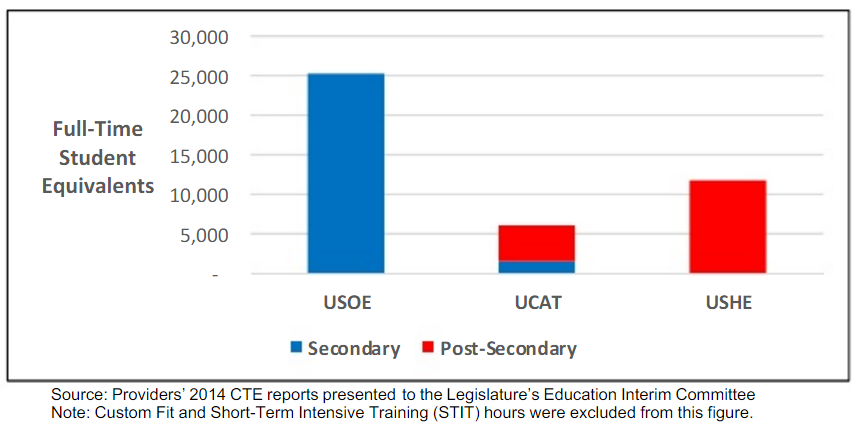A newly published legislative audit compares the data and reporting methods of Career and Technical Education (CTE) programs in the Utah System of Higher Education and the Utah College of Applied Technology. CTE certificates and degrees account for approximately 14 percent of all degrees awarded by USHE institutions.
Career and technical education at USHE institutions
USHE serves more than 12,000 full-time equivalent college-level students through CTE courses. Salt Lake Community College is the largest CTE provider in the state, with CTE programs also available at all other USHE institutions, with the exception of the University of Utah. USHE institutions offer three primary types of CTE awards:
- Associate of Applied Science Degrees – designed to lead students directly to employment requiring two years of preparation. The Associate of Applied Science (AAS) degree includes a core set of general education preparing students with a solid basis in composition, computation, and human relations. In some cases AAS programs can serve a dual purpose to prepare students for the workforce while serving as a pathway to a bachelor’s degree.
- Certificates of Completion – awarded for completion of programs that are typically one‐year in length and that prepare students for employment. Certificates of Completion also have a general education component.
- Certificates of Proficiency – short‐term training programs less than one year in length that prepare students for specific employment skills.
CTE providers teach significant amounts of CTE to Utah students
Audit recommendations
The audit makes three recommendations specific to USHE regarding CTE data reporting:
- “We recommend that USHE calculate completion rates for individual programs where the calculations are feasible.”
USHE has not reported completion rates for individual CTE programs system-wide. This is primarily due to the large number of students who enroll in a CTE course either for elective credit or as part of a degree program that is non-CTE, such as a bachelor’s degree program. USHE is currently looking at certain programs, such as nursing or dental hygiene that have program acceptance criteria, to calculate a completion rate.
- “We recommend that USHE include a subset of CTE-only job placements in its annual system-wide job placement rate reporting.”
For several years, USHE has published job placement rates of USHE graduates by program and degree type online. A subset of this information will be published of only CTE programs in the coming months, and will be included in the USHE annual report on Career and Technical Education.
- “We recommend that USHE review the available job placement data collected by its individual institutions and determine whether the data should be used in CTE program job placement rate reporting to identify whether or not placements are related to graduates’ fields of study.”
USHE is currently exploring the data rigor and reliability of institutional surveys. USHE has published job placement and wage information of college graduates for several years based on quarterly wage information submitted to the Utah Department of Workforce Services. This aggregated data relies on data matching of student information with state wage information. While the data has limitations, it is statistically viable, provides an insightful snapshot of real information, and is a model used by most other states in reporting wage and job placement information of college graduates.


